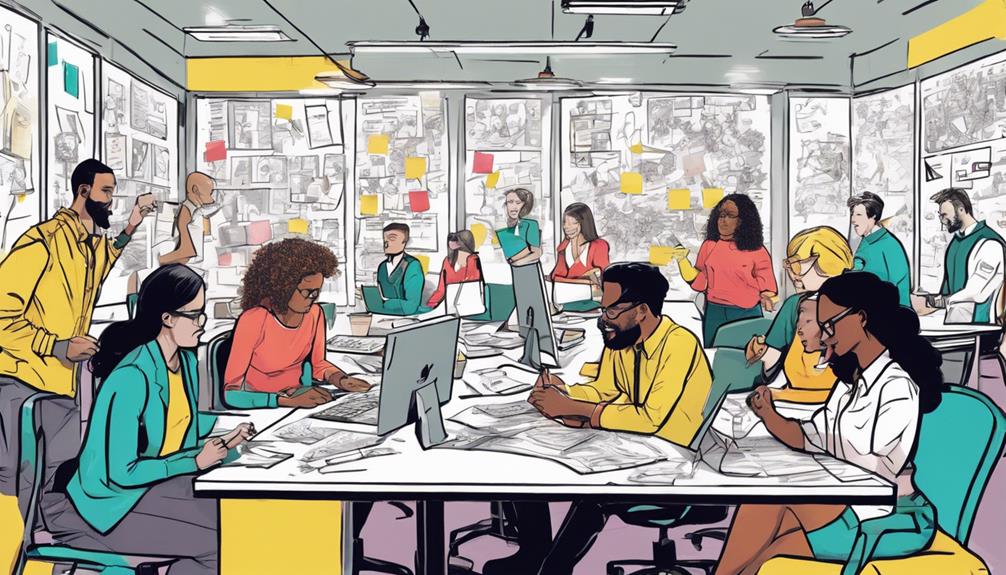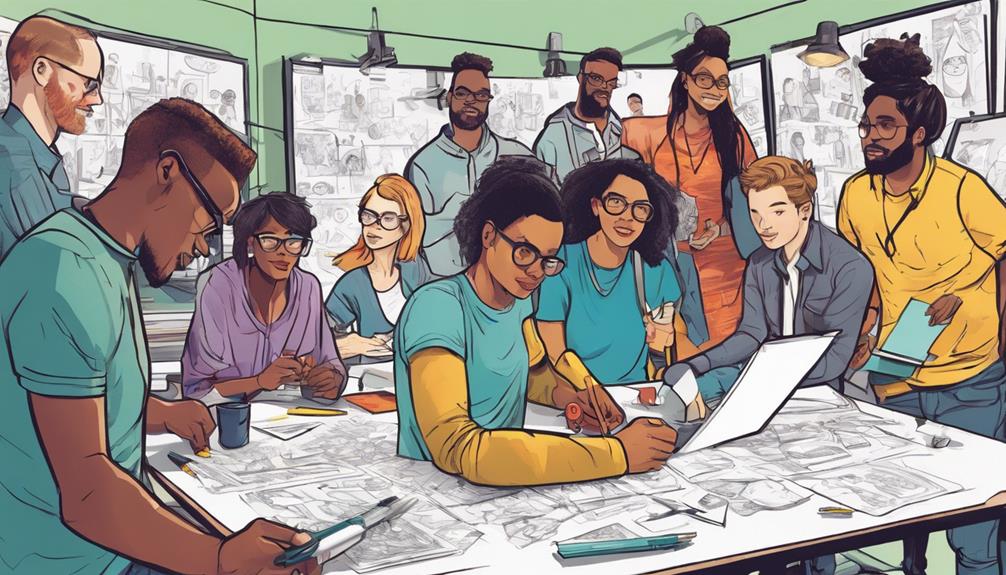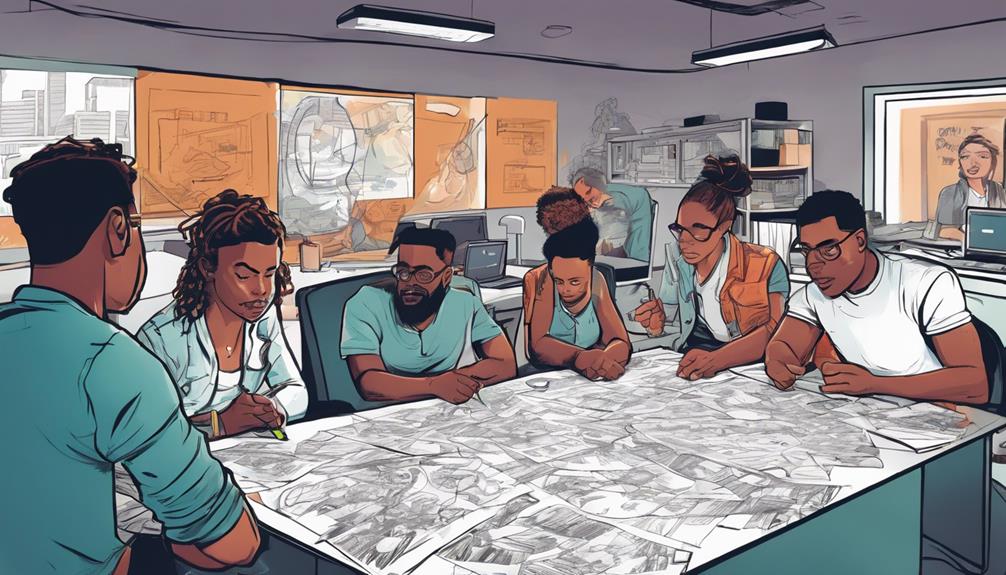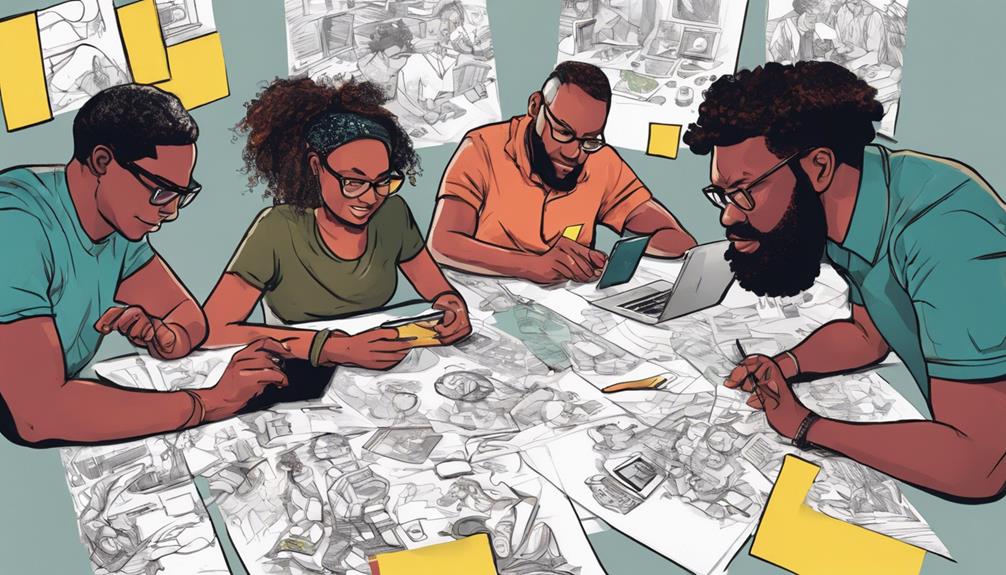Boost your problem-solving abilities and creativity with the best design thinking academy. Elevate your skills through user-centered methodologies and innovative approaches for impactful results in your professional journey. Reveal the potential to excel and stand out in the competitive landscape by enrolling in a program that aligns with your goals and aspirations. The right academy can set you on a path towards continuous growth and success in the dynamic field of design thinking. Get ready to transform your skill set and make a lasting impact by choosing wisely. The key to your enhanced skills awaits your decision.
Key Takeaways
- Stanford University Design Thinking Bootcamp: Intensive 4-day course for $14,000 USD.
- Cornell University Design Thinking Certificate: Online 6-month program for $3,750 USD.
- The Design Gym Design Thinking Bootcamp: Practical 1-day course ranging from $595-$675 USD.
- Varied duration and formats tailored for product, service, and infrastructure development.
- Programs focus on user-centered solutions, creativity, collaboration, and critical thinking.
Overview of Design Thinking
Design thinking is an ideology and process that focuses on user-centric problem-solving methodologies. This approach puts the user at the heart of the design process, emphasizing empathy and understanding to create innovative solutions. Design thinking encourages a shift towards tangible outcomes rather than being deterred by challenges, fostering a mindset of creativity and innovation.
The design thinking process consists of several key stages: empathizing with users, defining the problem, ideating potential solutions, prototyping ideas, and testing them for feedback. By following these steps, designers can gain a deep understanding of user needs and preferences, leading to more effective and user-friendly designs.
Businesses widely adopt design thinking to address complex problems while keeping the user experience at the forefront. This methodology has proven to be highly effective in generating creative solutions that resonate with users and drive business success. Additionally, design thinking's versatility allows it to be applied across various industries and disciplines to encourage innovation and problem-solving.
Benefits for UX Designers
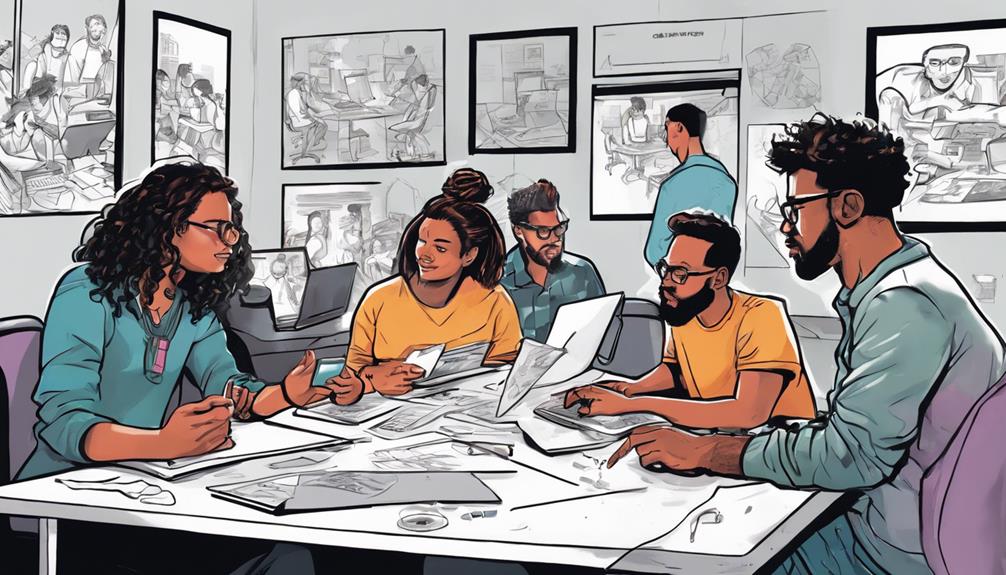
You'll find that design thinking certification can greatly enhance your problem-solving skills and creativity as a UX designer.
It also provides you with a competitive edge in the job market by improving collaboration with teams and stakeholders.
Formalizing your expertise in design thinking not only establishes credibility but also enables you to conduct effective workshops.
UX Designers' Skill Enhancement
By obtaining a design thinking certification, UX designers can greatly enhance their problem-solving abilities and creativity. Participating in design thinking bootcamps or courses can provide valuable insights into human-centered design principles, which are essential in creating user-friendly experiences. These programs focus on developing problem-solving skills tailored to the needs of users, allowing designers to craft solutions that meet and exceed expectations.
Moreover, acquiring a design thinking certification equips UX designers with the expertise to collaborate effectively with multidisciplinary teams and stakeholders. This not only enhances their ability to communicate ideas but also fosters a deeper understanding of user experience requirements. By formalizing their knowledge through certification, designers can establish credibility and conduct workshops that drive innovation and user-centric design practices.
In a competitive job market, a design thinking certification sets UX designers apart by verifying their expertise and commitment to continuous improvement. Freelancers, in particular, benefit from this formal recognition, as it demonstrates their proficiency in running successful workshops and addressing challenges inherent in user experience design.
Competitive Edge Benefits
Enhancing your problem-solving skills and creativity through Design Thinking Certification gives UX designers a significant competitive edge in the industry. By mastering design thinking methodologies, you're better equipped to tackle complex problems creatively, leading to innovative solutions that meet user needs effectively.
This certification not only enhances your individual capabilities but also improves collaboration with cross-functional teams and stakeholders. The ability to facilitate collaborative ideation sessions and gather diverse perspectives can set you apart as a valuable asset in any design project.
Moreover, having Design Thinking Certification showcases your dedication to continuous learning and professional development, making you a more attractive candidate to potential employers. In a competitive job market, where companies seek versatile and skilled UX designers, this certification can be the differentiating factor that lands you your dream job.
Credibility and Expertise
Earning a Design Thinking Certification bolsters your credibility and expertise as a UX designer, setting you apart in a competitive industry. Here's how obtaining this certification can benefit you:
- Enhanced Problem-Solving Skills: The certification equips you with structured methodologies to approach complex problems, helping you develop innovative solutions that meet users' needs effectively.
- Boosted Creativity: Through formal training in design thinking, you'll learn techniques to think outside the box, fostering creativity in your UX design process and enabling you to deliver more engaging and user-centric solutions.
- Improved Collaboration: Acquiring a design thinking certification enhances your ability to collaborate with cross-functional teams and stakeholders, facilitating smoother communication and alignment on project goals. This skill is highly valued in the job market, giving you a competitive edge in your UX design career.
Benefits for CEOs/Managers

Design Thinking Academy offers CEOs and Managers valuable benefits that enhance their leadership skills and drive organizational success. Certification in the design thinking process equips leaders with the tools to solve complex problems efficiently and effectively.
By adopting a user-centric mindset, CEOs and Managers can better understand their customers' needs and tailor innovative solutions to meet them. This approach not only improves business performance and revenue but also fosters a culture of innovation within the organization.
Furthermore, training employees to think like designers encourages creativity and out-of-the-box thinking, leading to unique solutions that set the company apart from competitors. Design thinking certification adds credibility and expertise to a leader's problem-solving and innovation capabilities, providing a competitive edge in the job market.
Top Design Thinking Programs
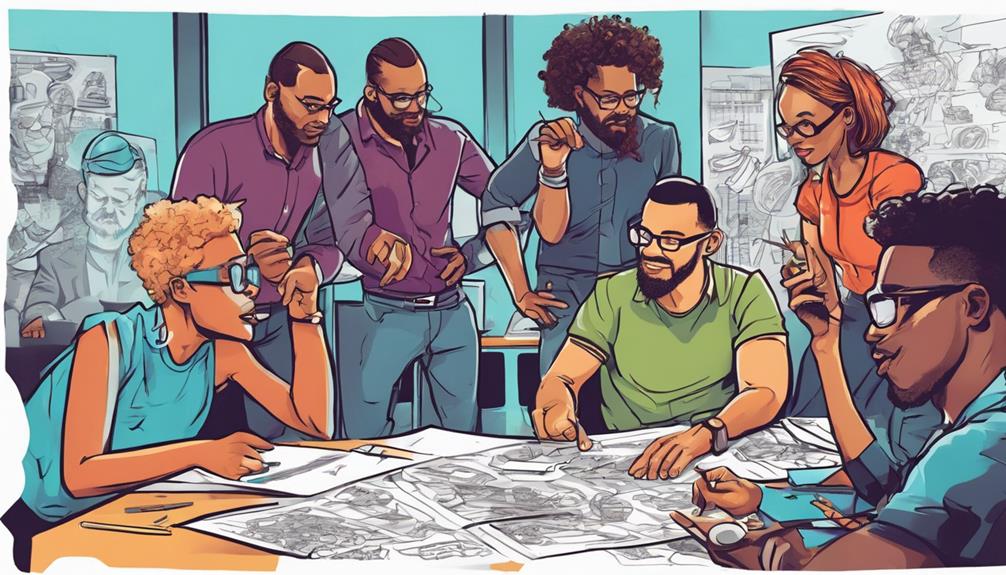
You'll find that the top design thinking programs offer a diverse range of learning opportunities, catering to different preferences and needs.
These programs are designed to deliver specific learning outcomes, equipping you with practical skills and strategies to tackle real-world challenges effectively.
Consider exploring these programs to enhance your design thinking capabilities and drive innovation in your organization.
Program Diversity
With a rich array of options at your disposal, top design thinking programs like IDEO U, Stanford University, and Cornell University offer diverse formats and courses to cater to various learning preferences.
Online Courses: These programs provide the convenience of learning from anywhere, at your own pace, making it ideal for those with busy schedules.
Diverse Formats: Whether you prefer in-person workshops, intensive bootcamps, or virtual classrooms, these programs offer flexibility to suit your learning style.
Enhanced Skills through Prototyping: Through hands-on projects and real-world challenges, participants in these programs learn to apply design thinking principles effectively, with a focus on prototyping techniques.
Discover a world of possibilities with these top design thinking programs, where you can explore different formats, engage in online learning, and develop your skills through practical prototyping exercises.
Choose the program that aligns with your preferences and start your journey towards mastering design thinking.
Learning Outcomes
Participants in top design thinking programs can expect to develop essential skills in problem-solving, creativity, and innovation, leading to tangible improvements in their design thinking abilities. These programs focus on enhancing learners' empathy, ideation, prototyping, and testing capabilities, ensuring a well-rounded skill set for tackling complex design challenges. Institutions like IDEO U, Stanford d.school, and Cornell University offer practical methodologies and real-world applications to hone these skills effectively. Engaging in cohort courses allows for global collaboration, while self-paced learning experiences cater to individual preferences. The positive feedback from learners worldwide underscores the impact of these programs, with many sharing success stories and benefiting from the strong alumni network provided. By actively participating in these top design thinking programs, individuals can expect to see significant growth in their problem-solving, innovation, and design thinking competencies.
| Design Thinking | Problem-Solving | Innovation |
|---|---|---|
| Enhances empathy | Develops critical thinking | Encourages creativity |
Program Details
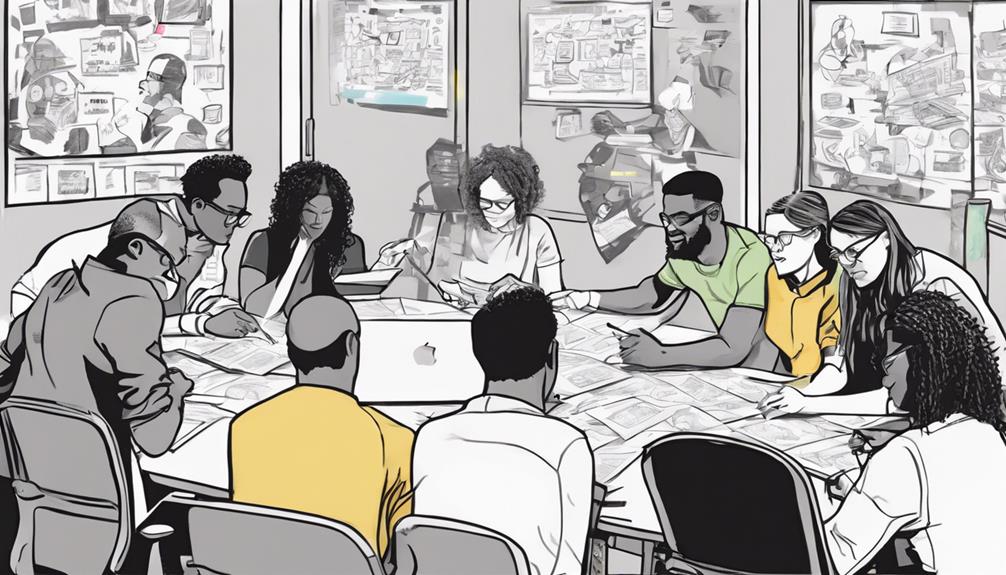
The programs offered by various institutions for design thinking vary in duration, format, and cost. Here are some intriguing options to explore:
- Cornell University Design Thinking Certificate: This 6-month online program, priced at $3,750 USD, is tailored for those interested in product, service, and infrastructure development.
- Stanford University Design Thinking Bootcamp: An intensive 4-day, in-person course costing $14,000 USD, focusing on real business challenges to hone your design thinking skills.
- The Design Gym Design Thinking Bootcamp: Offering a 1-day in-person course ranging from $595-$675 USD, this option is perfect for individuals and small teams seeking to enhance their design thinking capabilities.
Each of these programs provides a unique approach to design thinking, whether through online platforms, human-centered methodologies, or innovation-driven curricula. Choose the one that aligns best with your learning style and professional goals.
Importance of Creativity and Innovation
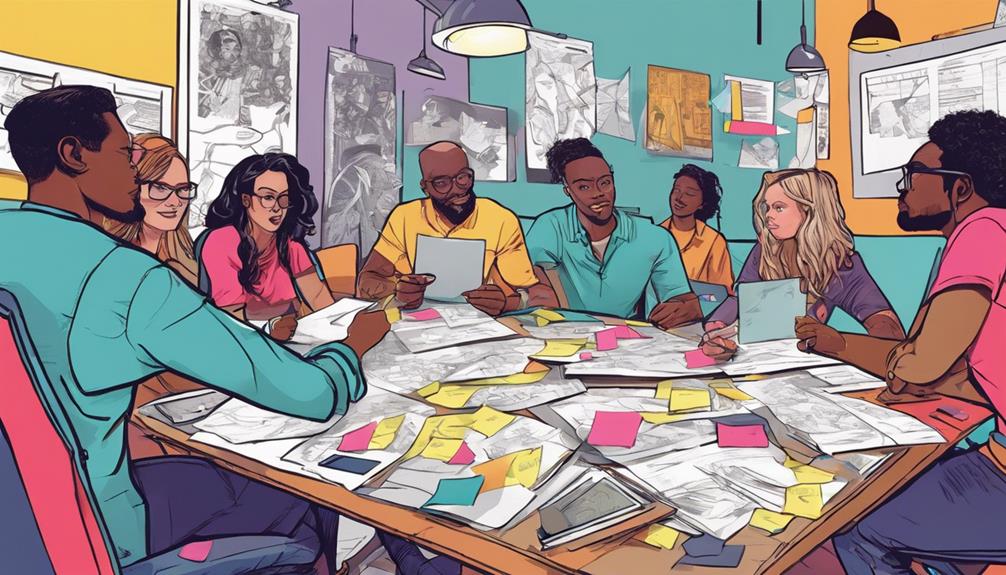
Embracing creativity and innovation is pivotal for maneuvering challenges and driving progress in today's dynamic landscape. Creativity involves experimenting, taking risks, breaking rules, and making mistakes to bring freshness and uniqueness.
Imagination fuels innovative thinking by providing reasons to survive and fulfill dreams. Innovation, on the other hand, pushes boundaries, leading to new solutions and advancements. Together, these elements contribute to creativity, uniqueness, and a fresh approach to problem-solving.
APJ Abdul Kalam, a renowned scientist and former President of India, emphasized the importance of living a purposeful life, which fosters creativity and knowledge growth. By nurturing creativity and embracing innovation, individuals can tackle complex problems with inventive solutions.
The ability to think beyond existing thoughts and norms allows for the development of groundbreaking ideas that can drive progress and success in various fields. In today's fast-paced world, where change is constant, the importance of creativity and innovation can't be overstated.
Design Thinking Programs Overview

To understand the practical application of creativity and innovation in problem-solving, exploring the overview of Design Thinking Programs is essential. Here are three key points to ponder:
- Best Design Thinking Courses:
Design Thinking programs offer a structured approach to problem-solving and innovation, focusing on user-centered solutions and practical methodologies.
- Foundations in Design Thinking:
These programs enhance creativity, collaboration, and critical thinking skills, equipping participants with valuable tools for tackling complex challenges.
- IDEO U and Roger Martin:
Institutions like IDEO U and thought leaders like Roger Martin provide excellent Design Thinking programs that can be completed online or in-person, catering to different learning preferences and allowing individuals to gain certifications to boost their credibility and expertise in problem-solving.
Frequently Asked Questions
Is a Design Thinking Course Worth It?
Yes, a design thinking course is worth it. It enhances problem-solving skills, boosts creativity, and provides valuable certifications for a competitive edge. Formalizing expertise in design thinking establishes credibility, aids in effective workshops, and leads to improved collaboration and innovation.
What Can You Do With a Design Thinking Certificate?
With a Design Thinking certificate, you can revolutionize problem-solving, foster collaboration, and stand out in the job market. Enhance credibility, conduct impactful workshops, and excel in user-centric design. Elevate your skills and career prospects!
How Much Does Design Thinking Cost?
Design Thinking costs vary widely, ranging from $595 to $14,000 USD. Programs like Cornell's online certificate ($3,750), Stanford's Bootcamp ($14,000), The Design Gym's one-day Bootcamp ($595-$675), and MIT's online course ($3,300) offer diverse options.
Is IBM Design Thinking Worth It?
Is IBM Design Thinking worth it? Absolutely! With courses tailored to different experience levels, emphasizing collaboration and practical application, you'll enhance creativity, problem-solving skills, and user-centric approaches. For around $300, it's a valuable investment in skill development.
Conclusion
So, why wait to enhance your skills with design thinking? Join the best design thinking academy today to tap into your creative potential and drive innovation in your work.
Did you know that 72% of CEOs believe that creativity is the key to success in business? Don't miss out on the opportunity to boost your career with design thinking.
Sign up now!
